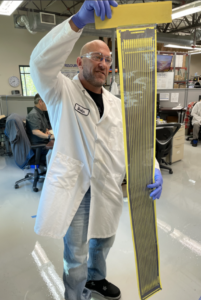Customizing Flex PCB Solutions: Partnering for Innovation at MicroConnex

Customizing Flex PCB Solutions: Partnering for Innovation at MicroConnex
At MicroConnex, we understand that innovation doesn’t happen in a vacuum—it’s a collaborative journey. That’s why we partner closely with our customers to tailor flexible printed circuit board (FPCB) solutions that not only meet but exceed their expectations. Our approach to customization goes beyond adapting existing designs; it involves a deep engagement with our clients to solve complex engineering challenges together.
Collaborative Design Process
Our team works hand-in-hand with clients to refine and optimize their designs for manufacturability. This often involves providing critical feedback to make designs more robust and manufacturable. By integrating our expertise early in the design process, we help avoid costly revisions and ensure a smoother production run.
Innovative Solutions through New Materials and Technologies
We thrive on challenges and are always ready to explore new materials and technologies to solve unique problems. Examples of our innovative approaches include:
- Development of New Materials: We constantly experiment with and implement new substrates and flexible materials that can bring about breakthroughs in FPCB performance and application.
- Alternate Etch Chemistry: By optimizing our etching processes, we can achieve finer lines and more precise features, essential for advanced electronics.
- Long Flex Technology: We have developed methods to produce flex circuits longer than standard panel sizes, enabling applications that require extended length without compromising on flexibility and reliability.
- Semi-Additive Processes Using Sputtering: This technique allows us to lay down ultra-thin layers of metal with high precision, essential for high-density interconnects and advanced circuit designs.
- Creative Use of Panel Space: Our engineers have devised ways to maximize panel utilization, such as designing flex circuits that zig-zag across the panel. This innovative layout technique allows for the production of longer flex PCBs within the constraints of standard manufacturing processes.
Welcoming Challenges and Solving Problems
At MicroConnex, we don’t just tackle challenges—we embrace them. Each new project is an opportunity to demonstrate how flexible and innovative thinking can lead to superior solutions. We are committed to working alongside our customers, understanding their specific needs and constraints, and delivering tailored solutions that pave the way for mutual success.
Looking Forward
Our door is always open to new partnerships and projects. Whether you are looking to push the boundaries of current technology or need a reliable partner to bring your innovative designs to life, MicroConnex is ready to assist. We look forward to solving complex problems together and achieving success in partnership with our clients.
Join us at MicroConnex, where your challenges find innovative solutions and your success is our success. Let’s innovate together and transform the future of flexible printed circuit boards.












